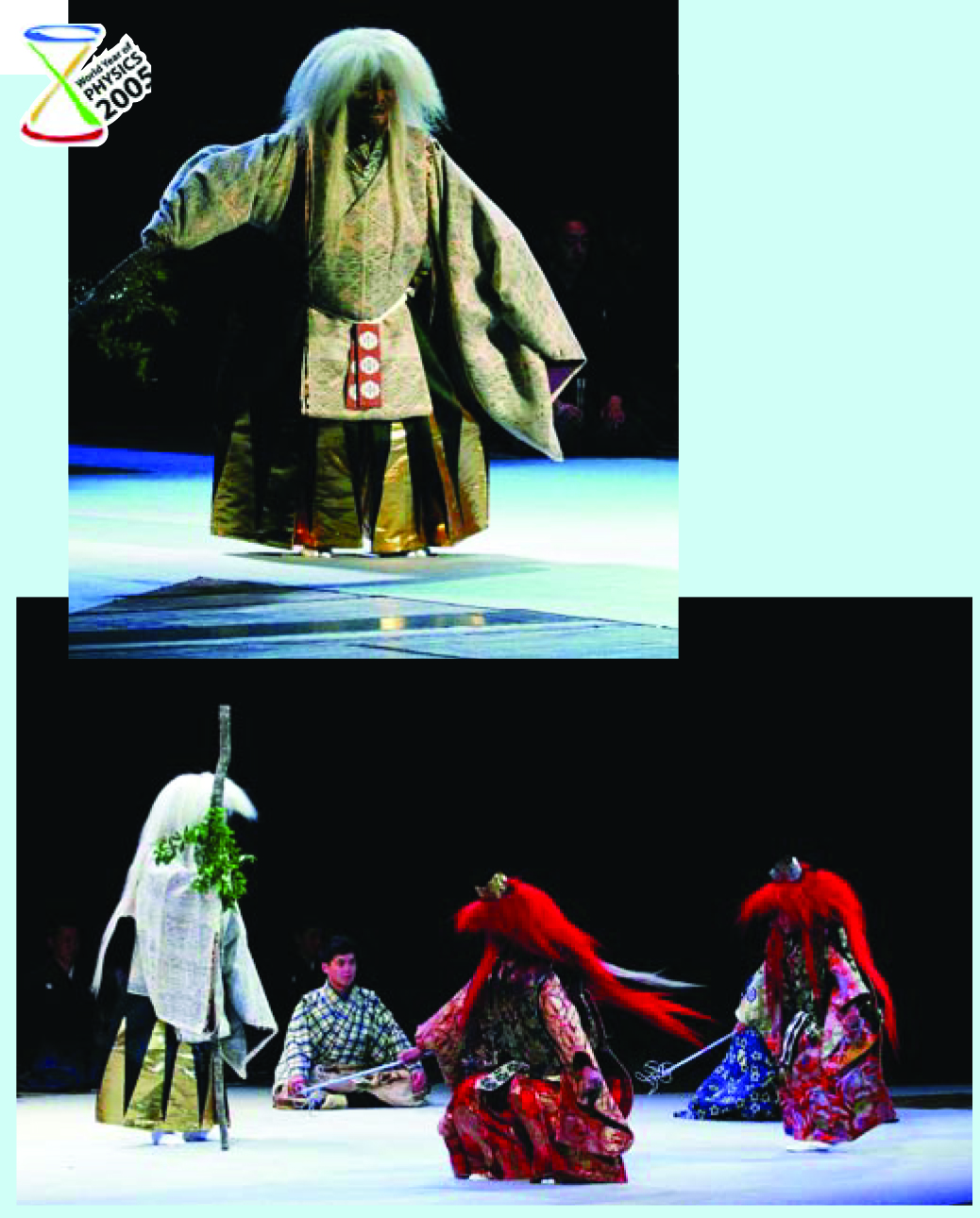One Stone: A Traditional Play on Einstein
DOI: 10.1063/1.2138411
“Truly, truly, as the Hermit Isseki said, time is slow for one who flies with the light, but it is fast for him who rests.” Isseki is Japanese for “one stone,” and the Hermit Isseki is, of course, Einstein in the Noh play in which these words are spoken by a messenger.
The Hermit Isseki is a new play written by immunologist Tomio Tada in the centuries-old Noh style of music and poetic drama. A group of physical societies commissioned a performance of the play this past summer in Tokyo, and, with a preshow discussion panel and some corrections to the physics, made it into a World Year of Physics (WYP) event.
In the play a wise woman wanders across deserts and seas, over mountains, and through forests in search of Isseki and answers about the universe. As the drama unfolds, allusions are made to art and science of the East and West. Relativity, the warping of spacetime, the twin paradox, energy and mass, the Big Bang, the birth and death of stars, and the end of the world are among the scientific references that are woven into the play. (An English translation of Hermit Isseki is available at http://www.physicstoday.org
Toward the end of the play, Isseki warns against nuclear bombs. “Behold the power of the nucleus!” he says. “May this atomic power ne’er be used, for war, strife, or destruction.”
Hermit Isseki played to a packed house of 900 theater-goers. That’s almost double the usual attendance for a Noh play, says Kazuo Kitahara, chair of Japan’s WYP steering committee. To help the audience follow the play’s symbolism, Kitahara, along with another scientist, a seasoned Noh performer, and Japan’s representative to Pugwash, the international scientific organization dedicated to reducing armed conflict, made presentations beforehand. The play “was a great occasion,” says Kitahara. “It’s the 50th anniversary of Einstein’s passing, and the 60th anniversary of dropping atomic bombs on Nagasaki and Hiroshima.”
Among the other WYP events in Japan was a national physics competition for teenagers. That was just one in a flurry of firsts, Kitahara says, noting that the WYP kick-off in Paris last January marked the first time Japan had sent college students to an international scientific meeting, and that Japanese high-school students will participate for the first time in the International Physics Olympiad next year in Singapore.
Hermit Isseki and other WYP events attracted interest in physics, Kitahara says. “The Noh contains thoughts of Einstein, peace, relativity, nuclear fission, nuclear power. These contents draw attention. I hope the general public feels familiar with the play and with Einstein.” A performance of the play is planned for next June at the United Nations headquarters in New York.

Hermit Isseki (top), representing Einstein in a Japanese play, explains cosmoldgical theories. In another scene (bottom), two nucleons dance vigorously, symbolizing nuclear fission.
(Images courtesy of the Japan Committee on the World Year of Physics.)

More about the Authors
Toni Feder. American Center for Physics, One Physics Ellipse, College Park, Maryland 20740-3842, US . tfeder@aip.org





